Crosslee G416LFE is a gas fire designed to provide both radiant and convected heat, using an efficient heat exchanger system. It is designed for use with natural gas (G20) at a supply pressure of 20 mbar. The fire has a realistic coal bed, and uses ceramic fibre components and coals that are removable for cleaning purposes. It has a single gas control with a variable high to low setting, and an adjustable heat output of up to 5.42 kW (18,500 Btu/h).
Crosslee G416LFE is a gas fire designed to provide both radiant and convected heat, using an efficient heat exchanger system. It is designed for use with natural gas (G20) at a supply pressure of 20 mbar. The fire has a realistic coal bed, and uses ceramic fibre components and coals that are removable for cleaning purposes. It has a single gas control with a variable high to low setting, and an adjustable heat output of up to 5.42 kW (18,500 Btu/h).



















-
 1
1
-
 2
2
-
 3
3
-
 4
4
-
 5
5
-
 6
6
-
 7
7
-
 8
8
-
 9
9
-
 10
10
-
 11
11
-
 12
12
-
 13
13
-
 14
14
-
 15
15
-
 16
16
-
 17
17
-
 18
18
-
 19
19
Crosslee G416LFE User manual
- Type
- User manual
Crosslee G416LFE is a gas fire designed to provide both radiant and convected heat, using an efficient heat exchanger system. It is designed for use with natural gas (G20) at a supply pressure of 20 mbar. The fire has a realistic coal bed, and uses ceramic fibre components and coals that are removable for cleaning purposes. It has a single gas control with a variable high to low setting, and an adjustable heat output of up to 5.42 kW (18,500 Btu/h).
Ask a question and I''ll find the answer in the document
Finding information in a document is now easier with AI
Related papers
-
Crosslee G413SVIENNACHICHES User manual
-
Crosslee G443CHELTENHAM User manual
-
Crosslee G477S.LINESTD User manual
-
Crosslee G449ELITEMKII User manual
-
Crosslee 010202016084F.S.3 User manual
-
Crosslee 010202016084F.S.3 User manual
-
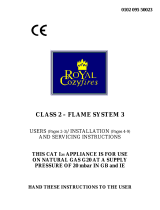 Royal Consumer Information Products Gas Fire User manual
Royal Consumer Information Products Gas Fire User manual
-
Crosslee G480S.LINECANTERB. User manual
-
Crosslee G469S.LINEDELUX User manual
-
Crosslee G426Sorrento User manual
Other documents
-
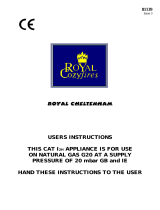 Royal Consumer Information Products U19019 G20 User manual
Royal Consumer Information Products U19019 G20 User manual
-
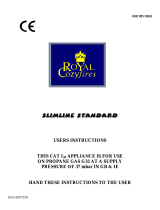 Royal Consumer Information Products G31 User manual
Royal Consumer Information Products G31 User manual
-
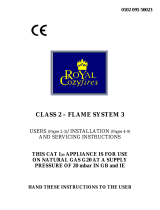 Royal Consumer Information Products Gas Fire User manual
Royal Consumer Information Products Gas Fire User manual
-
AEG G20 User manual
-
Royal Consumer Information Products Super Sixteen NV Decorative Gas Fireplace User manual
-
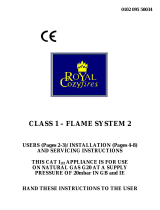 Royal Consumer Information Products Fire Pit G20 User manual
Royal Consumer Information Products Fire Pit G20 User manual
-
 Royal Consumer Information Products Super Hot Toater User manual
Royal Consumer Information Products Super Hot Toater User manual
-
Flavel Slimline Gas Fire User manual
-
Flavel Slimline SC Installation And Maintenance Instructions Manual
-
Flavel FSRNOEG Installation And Maintenance Instructions Manual
























